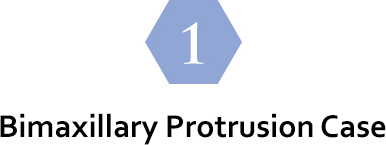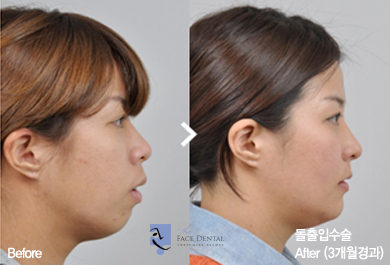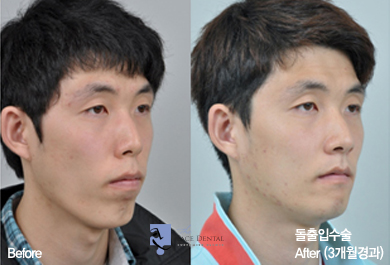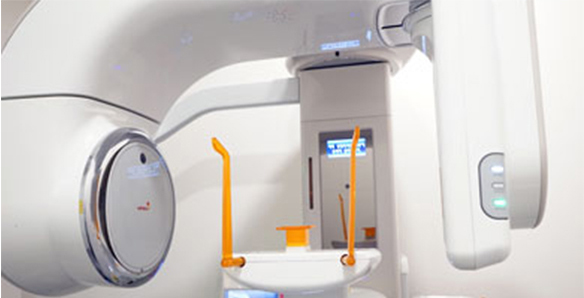

- Is orthodontic treatment alone able to correct mouth protrusion?
- In case of protruded teeth, orthodontic treatment corrects mouth protrusion. But in most cases of protruded mouth, teeth and gums are also protruded, which requires bimaxillary protrusion surgery (teeth and gums must be pushed back together to have treatment effect). Two-jaw surgery may be needed according to types of protruded mouth, so accurate analysis is essential.

- Does bimaxillary protrusion surgery require general anesthesia?
- Bimaxillary protrusion surgery is done under general anesthesia but it doesn’t involve much bleeding. You can leave the hospital the next day and go back to everyday life after 5~7days. You’ll have no difficulty eating after 1~2 weeks. Orthodontics after surgery shortens treatment period to 6 months. (Typical orthodontics for protruded mouth takes about 2 years.)

- What are the criteria for diagnosing bimaxillary protrusion surgery and two-jaw surgery?
- If protrusion exceeds 4mm, bimaxillary protrusion surgery is performed which extracts a tooth and moves the gum bones to the empty space. If protrusion is less than 4mm, two-jaw surgery without tooth extraction is performed which pushes the whole protruded mouth area back. But there are no absolute criteria, so it may change according to the patients’ state and needs after diagnoses and consultation.

- How long does the orthodontic treatment take in the case of protruded mouth which can be corrected with orthodontic treatment only?
- It differs from person to person. Typical orthodontic treatment takes 1~2 years, and requires wearing a retainer for 1 year. A retainer doesn’t create discomfort since it’s removable. It keeps teeth in place after braces are finally taken off so wearing a retainer is highly recommended.
 Korean
Korean Chinese
Chinese Japanese
Japanese Thailand
Thailand




























